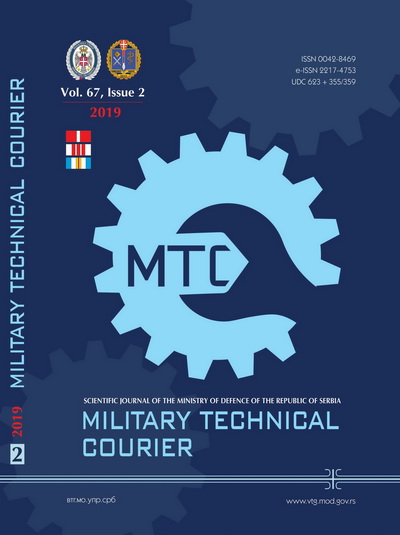Submachine guns in the armed forces of the NATO countries
Abstract
The paper presents a brief review of modern achievements and directions of further development of one type of small arms in the armament of foreign armed forces - namely, submachine guns in the armed forces of the countries signatories of the North Atlantic Treaty Organization (NATO). The article follows the historical genesis of the development of the use of submachine guns as specific types of small arms. Access to recent literature represented a major problem; consequently, data from the Internet was largely used. Submachine guns are one of the most effective and efficient types of infantry weapons of foreign armed forces so a more versatile look at the effects of their use is purposeful as well as the need for innovation and investing in our own resources. The article presents a synthesis of the authors’ practical experience with the use of submachine guns and the relevant theoretical knowledge.
References
Arsić, S. 1996. Savremeno naoružanje Kopnene vojske. Beograd: Novinsko-izdavačka ustanova Vojska (in Serbian).
Arsić, S. 2002a. Naoružanje Kopnene vojske. Beograd: Vojnoizdavački zavod (in Serbian).
Arsić, S. 2002b. Streljačko naoružanje sveta. Beograd: Novinsko-izdavački centar Vojska (in Serbian).
-Generalštab VJ - Uprava pešadije. 1998. Naoružanje stranih armija. Beograd: Vojnoizdavački zavod (in Serbian).
http://www.military-today.com. Accesssed: 01.02.2016.
http://world.guns.ru/smg-e.html. Accesssed: 01.02.2016.
http://www.zrno.ba/zrno/naoruzanje.html. Accesssed: 01.02.2016.
Mihajlović, M., & Arsić, S. 2003. Specijalne snage sveta. Beograd: Novinsko-izdavački centar Vojska (in Serbian).
Petrović, M. 2009. Mehanika automatskog oružja. Beograd: Vojnoizdavački zavod (in Serbian).
Vojvodić, B. 2009. Oružje sa vizijom. Kalibar, 149, pp.11-12 (in Serbian).
Proposed Creative Commons Copyright Notices
Proposed Policy for Military Technical Courier (Journals That Offer Open Access)
Authors who publish with this journal agree to the following terms:
Authors retain copyright and grant the journal right of first publication with the work simultaneously licensed under a Creative Commons Attribution License that allows others to share the work with an acknowledgement of the work's authorship and initial publication in this journal.
- Authors are able to enter into separate, additional contractual arrangements for the non-exclusive distribution of the journal's published version of the work (e.g., post it to an institutional repository or publish it in a book), with an acknowledgement of its initial publication in this journal.
- Authors are permitted and encouraged to post their work online (e.g., in institutional repositories or on their website) prior to and during the submission process, as it can lead to productive exchanges, as well as earlier and greater citation of published work (See The Effect of Open Access).

